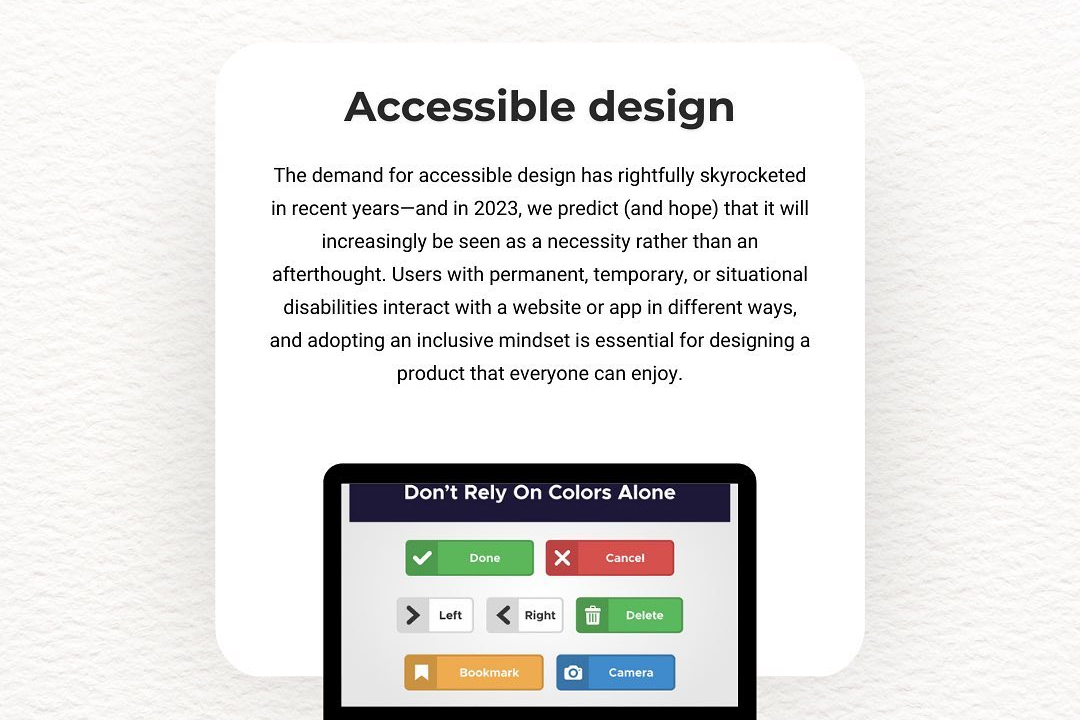Power BI Training Adelaide
Power BI Training in Adelaide at JustAcademy offers hands-on instruction in data visualization and a
Power BI Training Adelaide
Power BI Training in Adelaide at JustAcademy is essential for professionals seeking to harness the power of data to drive smarter business decisions. This training provides practical skills in creating insightful dashboards and interactive reports, enabling users to analyze complex data sets with ease. By mastering Power BI, participants can improve their data literacy, enhance their decision-making processes, and add valuable capabilities to their skillset. Whether you're looking to optimize business operations or advance your career, this course offers the tools and knowledge needed to succeed in today’s data-driven world.
To Download Our Brochure: https://www.justacademy.co/download-brochure-for-free
Message us for more information: +91 9987184296
Power BI Training in Adelaide at JustAcademy is essential for professionals seeking to harness the power of data to drive smarter business decisions. This training provides practical skills in creating insightful dashboards and interactive reports, enabling users to analyze complex data sets with ease. By mastering Power BI, participants can improve their data literacy, enhance their decision making processes, and add valuable capabilities to their skillset. Whether you're looking to optimize business operations or advance your career, this course offers the tools and knowledge needed to succeed in today’s data driven world.
Course Overview
JustAcademy's Power BI Training in Adelaide equips participants with essential skills to create dynamic reports and dashboards, analyze data efficiently, and make informed business decisions through hands-on projects and real-time applications.
Course Description
Join JustAcademy's Power BI Training in Adelaide to develop practical skills in data visualization, report creation, and business intelligence. Through hands-on projects and real-world scenarios, you'll learn to analyze data effectively, build interactive dashboards, and make data-driven decisions with confidence.
Key Features
1 - Comprehensive Tool Coverage: Provides hands-on training with a range of industry-standard testing tools, including Selenium, JIRA, LoadRunner, and TestRail.
2) Practical Exercises: Features real-world exercises and case studies to apply tools in various testing scenarios.
3) Interactive Learning: Includes interactive sessions with industry experts for personalized feedback and guidance.
4) Detailed Tutorials: Offers extensive tutorials and documentation on tool functionalities and best practices.
5) Advanced Techniques: Covers both fundamental and advanced techniques for using testing tools effectively.
6) Data Visualization: Integrates tools for visualizing test metrics and results, enhancing data interpretation and decision-making.
7) Tool Integration: Teaches how to integrate testing tools into the software development lifecycle for streamlined workflows.
8) Project-Based Learning: Focuses on project-based learning to build practical skills and create a portfolio of completed tasks.
9) Career Support: Provides resources and support for applying learned skills to real-world job scenarios, including resume building and interview preparation.
10) Up-to-Date Content: Ensures that course materials reflect the latest industry standards and tool updates.
Benefits of taking our course
Functional Tools
1 - Power BI Desktop: This is the primary tool used for creating detailed data models, reports, and visualizations. Power BI Desktop allows students to connect to multiple data sources, perform transformations, and design interactive dashboards. Its user friendly interface coupled with powerful features makes it ideal for developing customized analytics solutions. During the course, students learn how to import data, clean and shape it, and establish relationships between different data tables to build comprehensive reports that provide actionable insights.
2) Power BI Service: The cloud based platform enables sharing and collaboration on reports and dashboards. Students are introduced to publishing their work onto Power BI Service, setting up automated refreshes, and managing workspaces. This tool fosters teamwork and helps learners understand enterprise level deployment of BI solutions. Emphasis is laid on setting permissions, scheduling data refreshes, and publishing reports securely, which are essential skills in real world business environments.
3) Power BI Mobile App: This tool allows students to explore and access their reports and dashboards on mobile devices, supporting on the go data analysis. The course covers how to optimize reports for mobile viewing and sharing insights with stakeholders anytime and anywhere. Utilizing this app ensures students understand the importance of accessible BI and how to adapt reports for different device formats.
4) Data Sources and Connectors: Various tools such as SQL Server, Excel, SharePoint, and cloud services like Azure are used to demonstrate data integration techniques. The course teaches how to establish live connections, import static data, and use connectors to streamline data onboarding. Mastering these tools enables students to handle diverse data environments, facilitating seamless data aggregation and real time reporting.
5) Power Query: Embedded within Power BI Desktop, Power Query is used for data transformation and preparation. Students learn how to clean, filter, merge, and unpivot datasets efficiently. This ETL (Extract, Transform, Load) tool helps in automating repetitive data cleansing tasks, ensuring that the data feeding into reports is accurate and formatted correctly for analysis.
6) Power BI Data Modeling Tools: These include relationship view, calculated columns/measures, and hierarchies. The course emphasizes building robust data models that are optimized for performance and accurate data analysis. Students learn to utilize DAX functions to create complex calculations, enabling dynamic and intelligent reports that reflect business logic accurately.
7) DAX (Data Analysis Expressions): A powerful formula language used for creating custom calculated columns, measures, and aggregations inside Power BI. The course trains students to write DAX formulas to solve specific analytical problems, enhancing their ability to generate complex metrics and KPIs essential for business intelligence.
8) Power BI Visualizations: Various built in visual tools such as bar charts, line graphs, pie charts, maps, and custom visuals are covered. Students learn how to select appropriate visualizations based on the data story they want to tell, and how to customize these elements for clarity and impact. Effective visualization skills are crucial for communicating insights convincingly.
9) Custom Visuals Marketplace: The platform hosts additional visual tools that can be imported into Power BI to extend standard capabilities. The course shows students how to explore, download, and implement custom visuals, allowing for more innovative and engaging report designs tailored to specific project needs.
10) Power BI Embedded: This tool is used to integrate Power BI reports into internal applications or websites. The training covers how to embed interactive reports securely, enabling organizations to provide analytics within their platforms without requiring users to access Power BI directly. This enhances students' skills in deploying BI solutions in enterprise applications.
11 - PowerShell and CLI Tools: For automation purposes, PowerShell scripts and command line interfaces are introduced to manage reports, datasets, and refresh schedules programmatically. These tools help students learn how to streamline administrative tasks and scale BI operations efficiently across multiple projects.
12) Collaboration and Sharing Tools: Together with Power BI, tools such as Microsoft Teams, SharePoint, and OneDrive are integrated to demonstrate collaborative report development and distribution. The course emphasizes managing permissions, comments, and version control, fostering effective teamwork and stakeholder engagement.
13) Data Security Tools: Features like row level security (RLS) and data access controls are incorporated into training. Students are taught how to safeguard sensitive information, set user permissions, and implement security policies within Power BI reports, ensuring compliance with organizational data governance standards.
14) Power BI Report Builder: This tool offers advanced paginated reports for pixel perfect printing and detailed reporting. The course introduces how to develop paginated reports that are suitable for operational, compliance, or transactional purposes, expanding students' report development skills.
15) Integration with Programming Languages: The course explores how to connect Power BI with R and Python scripts to perform advanced statistical analysis and machine learning tasks. Students learn how to embed custom scripts into their data workflows, enhancing analytical capabilities beyond standard functionalities.
16) Azure Synapse Analytics & Data Lake: These tools are included to demonstrate big data handling and cloud storage solutions in conjunction with Power BI. Students gain insight into scalable data architectures, enabling them to work with massive datasets efficiently and generate enterprise grade analytics.
17) Power BI API and SDKs: For advanced users, the course introduces API integrations that allow programmatic access to datasets and reports. This knowledge prepares students to automate report generation, embed analytics into applications, and develop custom solutions tailored to organizational needs.
Certainly, here are additional tools and features associated with Power BI and related technologies, enhancing your understanding of the comprehensive BI ecosystem covered in JustAcademy courses:
18) Power BI Dataflows: This feature allows for the creation of reusable data transformation pipelines in the cloud, enabling centralized data processing. Students learn how to design, schedule, and manage dataflows to streamline data preparation and facilitate consistent data models across multiple reports.
19) Power BI Templates (.pbit files): Training includes how to build reusable report templates that can be easily customized for different datasets and business scenarios. This boosts efficiency and standardization in report development processes.
20) Power BI Performance Analyzer: A diagnostic tool that helps identify bottlenecks and optimize report performance. Students are taught to analyze execution times of visuals and queries, ensuring their reports run smoothly even with large datasets.
21 - Power BI Deployment Pipeline: This enterprise grade feature supports staging, development, and production environments. Students acquire skills to manage report lifecycle, conduct testing, and deploy updates systematically across organizational layers.
22) Power BI Data Management Gateway: Facilitates secure data transfer between on premises data sources and Power BI service. Knowledge of configuring and troubleshooting gateways is essential for maintaining real time data connectivity in hybrid environments.
23) Power BI Integration with Microsoft Power Platform: Combining Power BI with Power Apps and Power Automate enables the creation of end to end data driven applications and automated workflows. Students learn to develop integrated solutions that enhance business productivity.
24) Data Quality Management Tools: Techniques for data validation, cleansing, and enrichment within Power BI, ensuring high data integrity. Incorporates strategies for managing data anomalies and inconsistencies before analysis.
25) Version Control and Collaboration with Git and Azure DevOps: These tools facilitate code management for complex Power BI projects, helping teams track changes, collaborate effectively, and maintain consistency across reports and dashboards.
26) Natural Language Processing (Q&A Visuals): Power BI’s Q&A feature enables users to interact with data using natural language queries. Students learn to optimize and configure these features for intuitive data exploration.
27) Power BI with Excel Integration: Techniques for leveraging Excel’s functionalities like Power Pivot and Power Query within Power BI, allowing users to blend familiar tools for advanced analytics and seamless data transitions.
28) Power BI Licensing and Administration: Understanding different licensing plans, user roles, and administration settings helps learners manage large scale deployments and optimize resource allocation within organizations.
29) Data Visualization Best Practices: Emphasis on storytelling, color theory, layout design, and accessibility considerations, empowering students to craft compelling and inclusive reports.
30) Real Time Data Monitoring: Tools and techniques to set up streaming datasets and dashboards that reflect live data feeds, crucial for operational monitoring and rapid decision making.
31 - Event Driven Alerts and Notifications: Setting up automated alerts based on specific data thresholds, enabling proactive responses to critical changes in data patterns.
32) Multi Source Data Integration: Combining data from diverse sources such as SAP, Oracle, and API endpoints to create centralized reporting solutions, vital for comprehensive enterprise analytics.
33) Prescriptive and Predictive Analytics: Incorporating machine learning models into Power BI reports to forecast trends and recommend actions, elevating the analytical depth of student projects.
34) Custom Visual Development: Skills to create bespoke visuals using SDKs and JavaScript, giving students the ability to tailor visualizations to complex or unique data storytelling needs.
35) Data Governance Frameworks: Building structured policies for data AI, privacy, and compliance within Power BI environments, aligning with organizational standards and regulatory requirements.
36) Power BI Embedded Analytics SDKs: Developing embedded analytics solutions with SDKs for web and mobile apps, enabling scalable and embeddable BI experiences tailored to client needs.
37) Usage Analytics and Report Auditing: Monitoring how reports and dashboards are accessed and utilized, providing insights into user engagement and guiding further report optimization.
38) Cross Platform Compatibility: Ensuring reports are responsive and functional across various devices and browsers, critical for user adoption and accessibility.
39) Automation of Data Refreshes: Scheduling and managing data refresh jobs using Power BI APIs and automation scripts to ensure data currency without manual intervention.
40) Customized Row Level Security (RLS): Designing sophisticated security rules based on user roles, departments, or regions to protect sensitive data effectively across multiple reports.
This expanded overview provides a broader understanding of the robust suite of tools and methodologies students master through JustAcademy’s courses, preparing them for real world business intelligence challenges.
Browse our course links : https://www.justacademy.co/all-courses
To Join our FREE DEMO Session:
This information is sourced from JustAcademy
Contact Info:
Roshan Chaturvedi
Message us on Whatsapp:
Email id: info@justacademy.co
Calculator Program In Php Using Oops
Https Www Classmarker Com Online Testing Manual Addmembersintro











